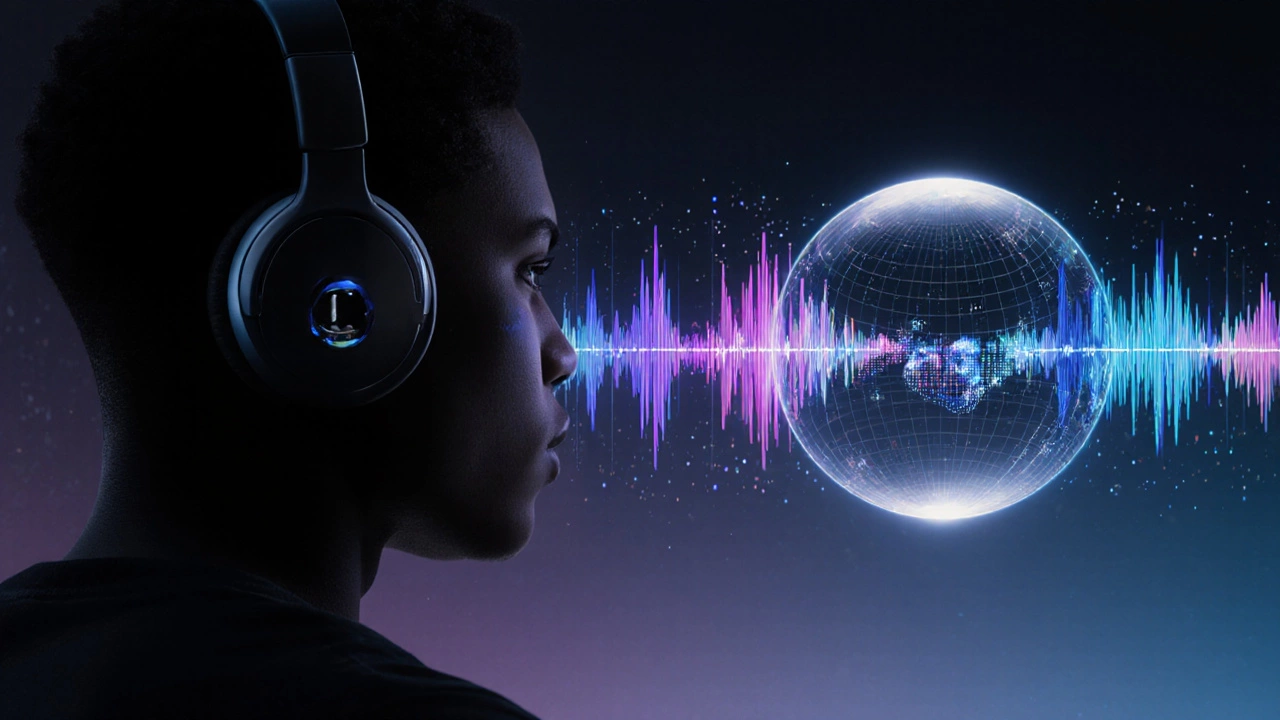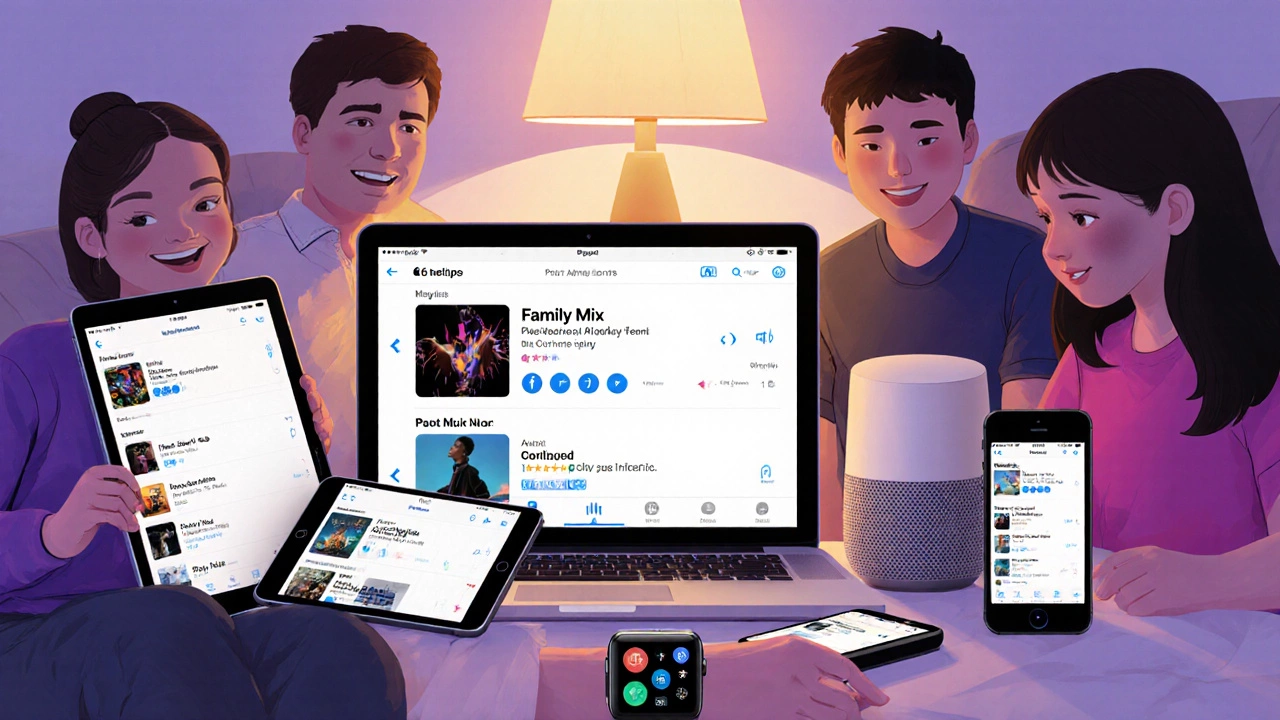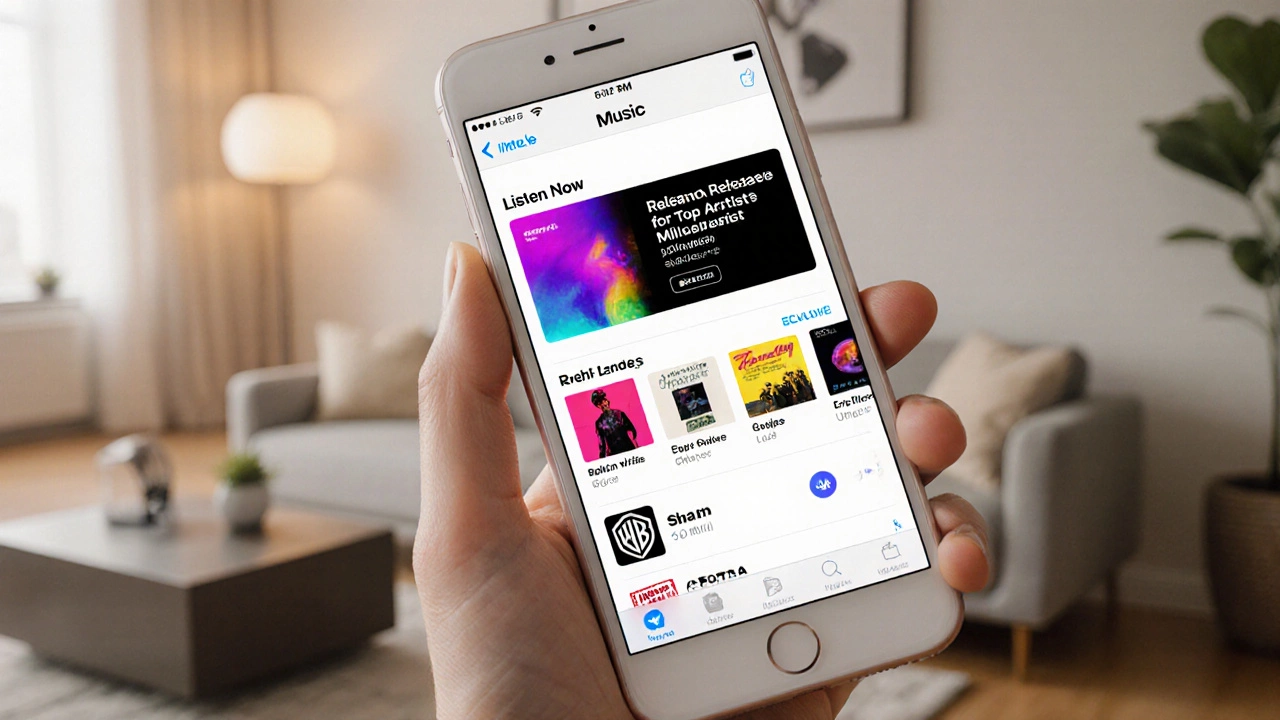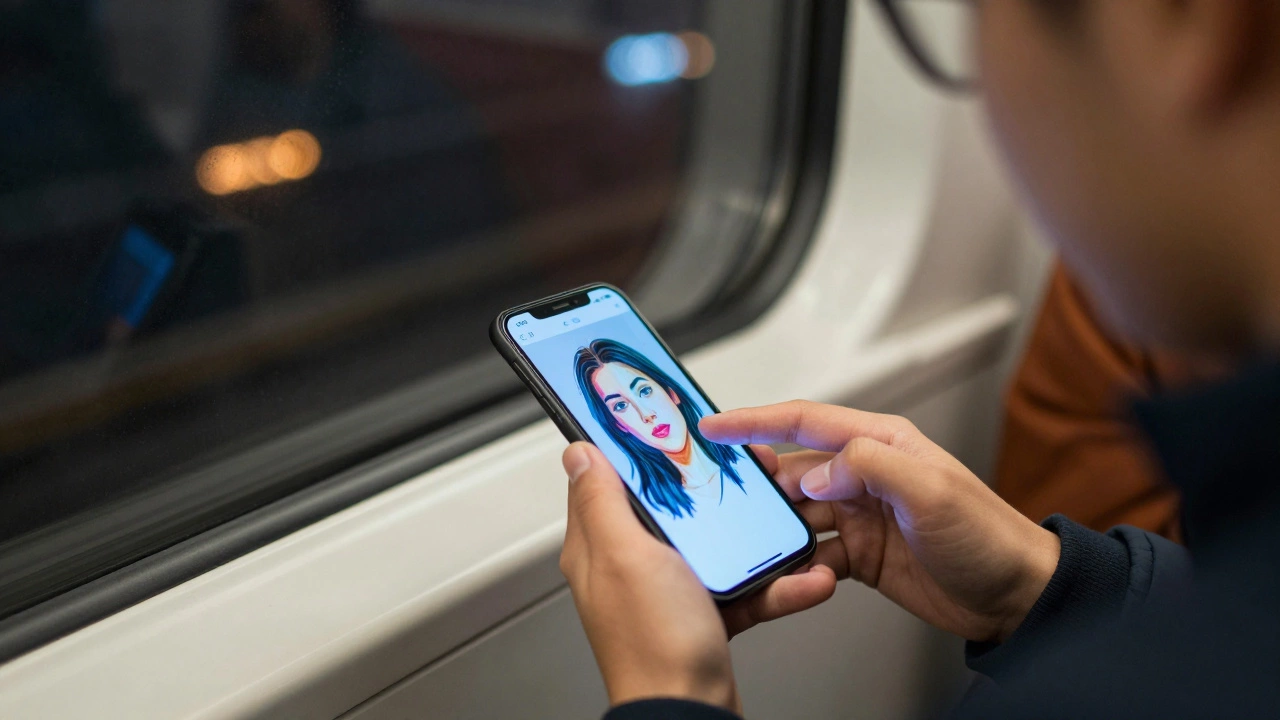Apple Music Cost Calculator
Find out how much Apple Music costs compared to Spotify based on your family size, student status, and audio quality preferences.
Your Preferences
Comparison Options
Ever wonder why Apple Music feels smoother, richer, and somehow more satisfying than other streaming services? It’s not magic - it’s a mix of deep library, top‑tier audio quality, tight integration with the Apple ecosystem, and clever curation that together create a listening experience that feels personal and powerful.
Massive Library Powered by Deals and Exclusives
When you first open Apple Music is a subscription‑based music streaming service that offers over 100 million songs, live radio stations, and exclusive releases, the sheer scale can be overwhelming. Apple secures deals with major labels like Universal, Sony, and Warner, plus a growing roster of indie distributors. That means you get new albums the day they drop, plus hidden gems that don’t make the mainstream radar.
Beyond the evergreen catalog, Apple Music rolls out exclusive albums, early‑access singles, and live concert recordings. Artists such as Taylor Swift, Beyoncé, and The Weeknd have used the platform for surprise drops, giving fans a reason to stay tuned for the next "Apple Music exclusive" alert.
Audio Quality That Listeners Can Hear
Two technical upgrades set Apple Music apart: Lossless Audio and Spatial Audio. Lossless streams at up to 24‑bit/192 kHz, preserving the detail recorded in the studio. If you’ve ever compared a low‑bit MP3 to a CD, you’ll notice the difference - instruments stay separated, vocals sound clearer, and the mix feels wider.
Spatial Audio adds a 3‑D feel by using Dolby Atmos. When you wear headphones or use compatible AirPods, songs move around your head as if you’re sitting in a live room. Tracks mixed for Dolby Atmos, plus the entire Apple Music catalog, benefit from this immersive soundstage.
Seamless Integration with the Apple Ecosystem
Apple’s ecosystem is the glue that keeps Apple Music sticky. Any device logged in with your Apple ID can instantly access your library, playlists, and listening history. Whether you’re on an iPhone, iPad, Mac, Apple TV, or HomePod, the transition is frictionless.
On iOS and macOS, Siri becomes a personal DJ. Simple voice commands like "Hey Siri, play my chill mix" or "Play the latest album by Dua Lipa" launch the right content instantly. The same voice‑first approach works on Apple Watch and CarPlay, letting you stay in control while you’re on the move.
Family Sharing is another ecosystem win. Up to six family members can share one subscription, each with their own library, recommendations, and offline downloads. This reduces the per‑person cost and keeps everyone in the same musical household.
Curated Playlists and Human Touch
Algorithmic recommendations are great, but Apple Music leans heavily on human curation. Its editorial team, known as "Apple Music Editors," crafts genre‑based playlists, mood mixes, and weekly picks. Playlists like "Today's Hits," "Relaxing Instrumentals," and "Jazz Classics" are updated by real people who understand trends and taste.
One notable feature is Curated Playlists from celebrity DJs and influencers. When a famous producer drops a "Mix of the Week," fans trust that it reflects genuine musical insight, not just an algorithm.
The platform also offers radio stations such as Beats 1 (now Apple Music 1), which streams live shows hosted by DJs worldwide. Listeners get interviews, behind‑the‑scenes stories, and exclusive tracks you won’t find elsewhere.

User Experience: Clean UI and Social Features
The Apple Music app feels clean and consistent across devices. Album art dominates the screen, making browsing feel visual. The "Listen Now" tab surfaces personalized mixes like "Your Mix" and "Favorites Mix," generated from your listening habits.
Socially, Apple Music lets you follow friends, see what they’re listening to, and share playlists with a simple tap. The integration with Apple TV+ lets you sync song credits while watching music documentaries, creating a richer media ecosystem.
How Apple Music Stacks Up Against the Competition
| Feature | Apple Music | Spotify |
|---|---|---|
| Song catalog | 100 M+ tracks | 95 M+ tracks |
| Lossless audio | Up to 24‑bit/192 kHz (included) | HiFi tier (extra cost) |
| Spatial Audio / Dolby Atmos | Available for entire catalog | Limited selection |
| Family plan price (US) | $15.99/month (6 users) | $15.99/month (6 users) |
| Voice assistant | Siri integration across devices | Amazon Alexa & Google Assistant (limited) |
| Exclusive content | Frequent artist drops & live sessions | Occasional podcasts & playlists |
The table shows why many users swing back to Apple Music after trying other services - especially when audio quality and ecosystem integration matter.
Pricing, Trials, and the Family Plan
Apple Music offers a 1‑month free trial for new users, then moves to the standard $10.99/month individual plan. The Family Sharing plan costs $15.99/month and supports up to six members, each with their own library and recommendations. Students can snag a discounted $5.99/month with a valid .edu email.
Because the service is tied to your Apple ID, you never need a separate login - the same credentials you use for iCloud work everywhere. This simplicity lowers friction for families and reduces the chance of forgotten passwords.

Common Misconceptions and How to Avoid Them
- Misconception: Lossless audio drains battery quickly. Reality: Apple Music streams lossless only when you enable it, and the power impact is similar to high‑resolution video streaming.
- Misconception: Apple Music lacks good playlists. Reality: The editorial team curates genre‑specific mixes weekly, and user‑generated playlists are just a tap away.
- Misconception: You need the latest iPhone to use Apple Music. Reality: The app runs on any device that supports iOS 13 or later, and there are web players for Windows and Android.
Quick Takeaways
- Over 100 million songs plus exclusive releases keep content fresh.
- Lossless and Spatial Audio deliver studio‑quality listening.
- Deep integration with iOS, macOS, Siri, and Family Sharing creates a seamless experience.
- Human‑curated playlists and live radio add personality beyond algorithms.
- Pricing matches competitors, but the bundled ecosystem value often tips the scales.
Frequently Asked Questions
Can I use Apple Music on Android?
Yes. Apple offers a dedicated Android app that includes the full catalog, playlists, and lossless streaming (if your device supports it).
What’s the difference between Lossless Audio and Spatial Audio?
Lossless Audio preserves the original recording’s detail, while Spatial Audio adds a 3‑D surround effect using Dolby Atmos. You can enable both at the same time for the richest experience.
How does Family Sharing work for Apple Music?
One organizer pays for the plan, then invites up to five other family members using their Apple IDs. Each member gets a personal library, recommendations, and offline downloads.
Is Apple Music better for offline listening?
Both Apple Music and competitors allow offline downloads, but Apple’s integration with iCloud makes syncing across devices seamless. Your downloaded songs appear automatically on any signed‑in device.
Do I need an Apple device to get the best sound?
For Spatial Audio, using AirPods Pro, AirPods Max, or other Dolby‑compatible headphones provides the full effect. However, lossless streams can be heard on any high‑quality headphones or speakers.





